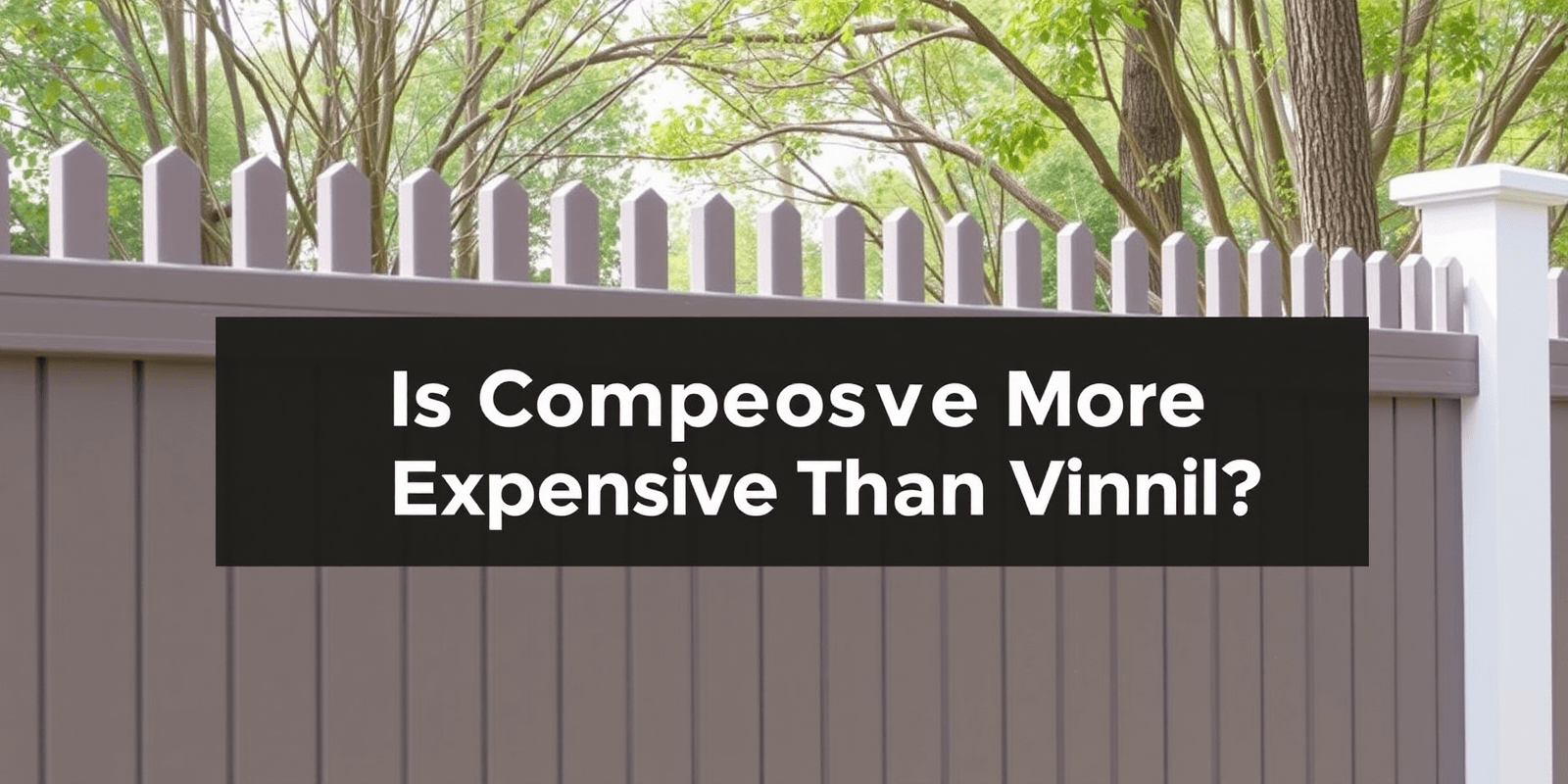Physical Address
304 North Cardinal St.
Dorchester Center, MA 02124
Physical Address
304 North Cardinal St.
Dorchester Center, MA 02124

Discover the factors that influence the cost difference between composite and vinyl fences and learn how to choose the best option for your budget.
When it comes to selecting the right fencing material for your property, two popular choices often come up: composite fencing and vinyl fencing. Both materials offer unique benefits, but one question that frequently arises is whether composite fencing is more expensive than vinyl. This article aims to provide a comprehensive guide detailing the cost implications of choosing composite fencing over vinyl, considering factors like initial investment, durability, aesthetics, and long-term savings.
The initial cost is often the first factor people consider when deciding between composite and vinyl fencing. Typically, composite fencing tends to be more expensive upfront compared to vinyl. According to a study by the American Homeowner Association, the average cost of composite fencing ranges from $20 to $35 per linear foot, while vinyl fencing can range from $12 to $25 per linear foot. However, the actual price can vary based on regional labor costs, material quality, and specific design requirements.
One significant advantage of composite fencing over vinyl is its enhanced durability. Composite fencing is made from a combination of wood fibers and recycled plastic, making it more resistant to wear and tear, including fading, warping, and cracking. In contrast, vinyl fencing can become brittle over time, especially in extreme weather conditions. A report by the National Association of Home Builders suggests that composite fencing can last up to 25 years with minimal maintenance, whereas vinyl may need replacement or repair after about 15 years.
Both composite and vinyl fencing offer various styles and colors, allowing homeowners to choose options that complement their home’s aesthetic. However, composite fencing often mimics the look of natural wood, offering a more organic appearance. Vinyl fencing, while available in several colors, might not achieve the same level of realism as composite. The ability to replicate wood grain and texture makes composite fencing a popular choice among those seeking a traditional yet low-maintenance fence.
While composite fencing may have a higher initial cost, it can lead to substantial long-term savings. Due to its superior durability and lower maintenance needs, composite fencing requires less frequent repairs and replacements, which can translate into significant cost savings over the life of the fence. For example, a study published in the Journal of Housing Economics found that homeowners who opted for composite fencing saved an average of $500 annually in maintenance costs compared to those with vinyl fencing.
Another factor to consider is the maintenance required for each type of fencing. Composite fencing generally requires minimal upkeep, needing only occasional cleaning with mild soap and water. On the other hand, vinyl fencing may require periodic cleaning and inspection for signs of damage or discoloration. Regular maintenance can help extend the lifespan of both types of fencing, but composite’s durability reduces the frequency and intensity of required care.
Choosing between composite and vinyl fencing involves weighing multiple factors, including initial cost, durability, aesthetics, and long-term savings. While composite fencing may initially appear more expensive, its superior durability and reduced maintenance needs often result in significant long-term savings. By understanding these key considerations, homeowners can make an informed decision that best fits their budget and lifestyle.
American Homeowner Association – Fencing Costs
National Association of Home Builders – Journal of Housing Economics